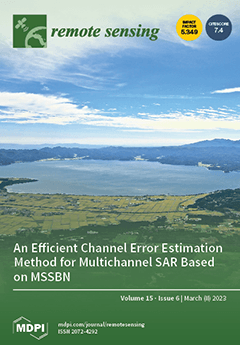Accurate assessments of greenhouse gas emissions and carbon sequestration in natural ecosystems are necessary to develop climate mitigation strategies. Regional and national-level assessments of carbon sequestration require high-resolution data to be available for large areas, increasing the need for remote sensing products that quantify carbon stocks and fluxes. The Intergovernmental Panel on Climate Change (IPCC) provides guidelines on how to quantify carbon flux using land cover land change and biomass carbon stock information. Net primary productivity (NPP), carbon uptake, and storage in vegetation, can also be used to model net carbon sequestration and net carbon export from an ecosystem (net ecosystem carbon balance). While biomass and NPP map products for terrestrial ecosystems are available, there are currently no conterminous United States (CONUS) biomass carbon stock or NPP maps for tidal herbaceous marshes. In this study, we used peak soil adjusted vegetation index (SAVI) values, derived from Landsat 8 composites, and five other vegetation indices, plus a categorical variable for the CONUS region (Pacific Northwest, California, Northeast, Mid-Atlantic, South Atlantic-Gulf, or Everglades), to model spatially explicit aboveground peak biomass stocks in tidal marshes (i.e., tidal palustrine and estuarine herbaceous marshes) for the first time. Tidal marsh carbon conversion factors, root-to-shoot ratios, and vegetation turnover rates, were compiled from the literature and used to convert peak aboveground biomass to peak total (above- and belowground) biomass and NPP. An extensive literature search for aboveground turnover rates produced sparse and variable values; therefore, we used an informed assumption of a turnover rate of one crop per year for all CONUS tidal marshes. Due to the lack of turnover rate data, the NPP map is identical to the peak biomass carbon stock map. In reality, it is probable that turnover rate varies by region, given seasonal length differences; however, the NPP map provides the best available information on spatially explicit CONUS tidal marsh NPP. This study identifies gaps in the scientific knowledge, to support future studies in addressing this lack of turnover data. Across CONUS, average total peak biomass carbon stock in tidal marshes was 848 g C m
−2 (871 g C m
−2 in palustrine and 838 g C m
−2 in estuarine marshes), and based on a median biomass turnover rate of 1, it is expected that the mean NPP annual flux for tidal marshes is similar (e.g., 848 g C m
−2 y
−1). Peak biomass carbon stocks in tidal marshes were lowest in the Florida Everglades region and highest in the California regions. These are the first fine-scale national maps of biomass carbon and NPP for tidal wetlands, spanning all of CONUS. These estimates of CONUS total peak biomass carbon stocks and NPP rates for tidal marshes can support regional- and national-scale assessments of greenhouse gas emissions, as well as natural resource management of coastal wetlands, as part of nature-based climate solution efforts.
Full article





